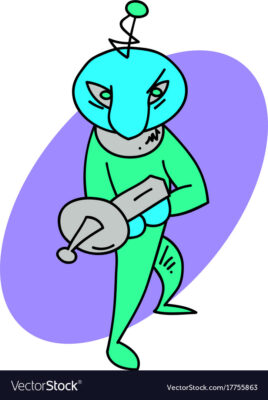
Black Soldier Flies Fight Alien Invaders
Invasions by non-native species that become economically and environmentally damaging pests is a very important problem facing people around the world. Water hyacinth is one such species. While it definitely has pretty flowers, this plant forms dense mats floating on the surface of lakes and rivers. It clogs waterways, outcompetes native plants, and blocks oxygen and light for underwater organisms.

Fortunately, it appears that harvested water hyacinth can be used as a part of black soldier fly diet. Doing so will not solve the problem once, for all, and everywhere. However, it may help.
Vodounnou, J.V., Dossa, V., Djissou, C. et al. Feeding Optimization of Water Hyacinth (Eichhornia crassipes) Leaves as Rearing Substrate for the Production of Black Soldier Fly (Hermetia illucens) Larvae. Waste Biomass Valor (2024). https://doi.org/10.1007/s12649-023-02408-w
Controlling the fast proliferation of Water Hyacinth (WH) is crucial which is otherwise a serious threat to aquatic ecosystems. The aim of this study is to analyze the potential of WH as feeding substrate for rearing of Black Soldier Fly Larvae (BSFL). For that, five different diets were formulated based on WH leaves and soy bran. The experimental device used is a complete random block consisting of 15 tanks (25 cm x 14 cm x 12 cm) arranged in triplicate and each containing 200 Hermetia illucens larvae. The experiment was done for 10 days. We notice significant differences between the different parameters. The Daily Weight Gain (DWG) varied from 2.54 ± 0.09 (R4) to 4.52 ± 0.02 (R0). Production varied from 50.87 ± 1.79 g/kg of substrate (R4) to 90.56 ± 0.54 g/kg of substrate (R0) and the Degradation Rate of substrates varied from 42.93 ± 1.79% (R4) to 65.00 ± 2.88% (R0). The survival rate varied from 91.33 ± 1.92% (R4) to 99.00 ± 0.28% (R0). Following the Z correlation test, a strong correlation (81.8%) is observed between the nitrogen in substrate and DWG of (BSF) larvae, as well as the degradation rate of the substrate (82.8%). This is also noticed with the organic matter content of the substrate which is strongly correlated with the DWG (97.6%) and the degradation rate of the substrate (91.6%). About nutritional quality of the larvae, a significant difference (p < 0.05) is observed between the different treatments. The protein varied from 31.47 ± 0.33% (R4) to 40.64 ± 032% (R0). The lipid varied from 15.36 ± 0.12% (R4) to 30.44 ± 0.18% (R0). It appears from this study that water hyacinth leaves mixed with SB can be valorised in the BSF larvae rearing.
